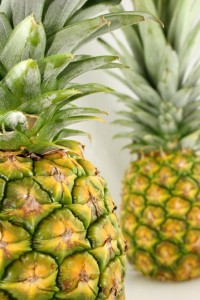
More evidence that low-calorie sweeteners are bad for your health
Studies show that artificial sweeteners can raise the risk of hypertension, metabolic syndrome, type 2 diabetes and heart disease, including stroke.

Throughout our lifetimes, the joints and connective tissue within them are subject to a lot of wear and tear. This, naturally, depends a great deal on the type of activities we engage in.
Athletes, for example, are at far greater risk of experiencing joint issues in later life than those who engage in moderate exercise. Of course, doing no activity at all can be equally as detrimental, since exercise has a bearing upon bone density, plus a sedentary lifestyle is more likely to cause someone to hold many extra pounds which can, in itself, put increased burden upon the joints.
In virtually every circumstance, joint problems centre around two major factors:
Inflammation In every known joint malady, there is an inflammatory involvement to one degree or another. Whatever the cause, inflammation is the primary factor for pain and joint immobility.
The body produces many of its own chemical agents that are used to “switch on” an inflammatory response, as well as chemical agents that inhibit inflammation. These can be substances called prostaglandins, other substances called cytokines, and also a third group of compounds called free radicals.
Auto-immune response joint problems, such as osteoarthritis, arise due to normal wear within the joints. However, there is a specific type of arthritis that is a completely different animal. That is rheumatoid arthritis an auto-immune condition, in which the body’s own immune system develops antibodies against its own tissues.
In this case it the antibodies attack the cartilage and connective tissues within the joint capsule.
Both these processes must be taken into consideration when creating a medicinal menu for joint problems. We also need to consider other ways in which we can help the body to manage symptoms, such as increasing and supporting the activity of the lymphatic system and the kidneys, or instance by increasing the removal of waste from the joints.
Normal day to day metabolic functions within the joint can leave behind waste products and gunk that the immune system can react to. This causes tissue damage and localised inflammation, thus causing pain and reduced joint movement and, if left unattended, damage of the tissues within the joint.
It is vital, therefore, that we enable these waste products to be cleared from the joint and the body as rapidly as possible. This is achieved by increasing the rate at which waste material travels out of the joint, into the lymphatic system, on to the kidneys, and out of the body through the urine.
Certain herbs, foods, and ingredients can stimulate the activity of the kidneys and lymphatic system. This action is known as diuresis. Stimulating the kidneys’ expulsion of fluid from the body in essence speeds up the removal of all fluid bound waste products from the body, as general movement of fluid in the body speeds up somewhat. Ingredients such as parsley, celery, dandelion, and fennel all have very strong diuretic capabilities.
The smoothie recipe below makes use of some of these ingredients. It includes:
Pineapple This everyday food contains a very powerful enzyme called bromelain which has well documented anti-inflammatory properties.
Celery A powerhouse of complex chemicals, such as 3-n-bulylphthalide (3nB for short), a very potent anti-inflammatory and a notable painkiller. It also contains coumarins, a group of chemicals that help remove metabolic waste products that can accumulate within the joint.
Ginger That characteristic zingy flavour and aroma come in part from two chemicals called zingerone and shogaol, both powerful anti-inflammatory agents. They work in a similar way to a class of pharmaceutical drugs known as COX-2 inhibitors, by interfering with the production of pro-inflammatory prostaglandins.
Pineapple, Celery, and Ginger Smoothie
You will need:
½ large fresh pineapple
2 fresh celery stalks
2.5 cm (1 inch) piece of fresh ginger root
Prepare the pineapple by cutting off each end. Then, slice off the skin in a downward direction. This minimizes waste. Remove “eyes” from the flesh of the pineapple, and then cut half of the flesh (including the fleshy inner core) into manageable chunks.
Chop the celery stalks into small pieces.
Peel the ginger and chop finely.
Place all the ingredients into a blender, along with a tiny amount of water, and blend into a smooth fragrant drink.
This recipe is a fantastic all rounder. It is of relevance to every type of joint malady imaginable and so easy to make. I find it a great breakfast option for a lot of my clients, and one that they themselves make, day in, day out, purely because it gets quite addictive.
More articles by Dale on this site:

Please subscribe me to your newsletter mailing list. I have read the
privacy statement